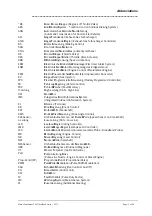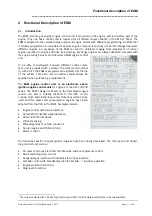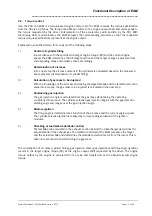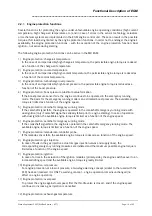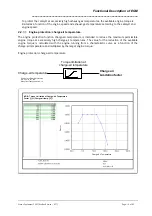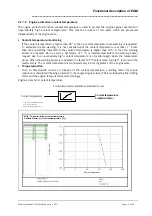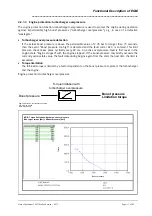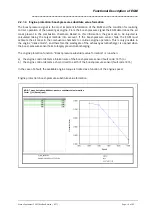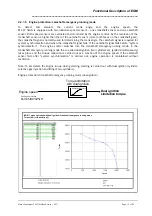
The M 447 hLAG Natural-Gas Engine
_____________________________________________________________________
Status September 2003 (EvoBus-Service / AFT)
Page: 8 of 83
1
Natural Gas Engine M 447 hLAG
The M 447 hLAG is a further development of the M 447 hG and is used in the natural gas Citaro from
Mercedes-Benz and in the CBC chassis.
Technical data of engine:
•
6-cylinder, inline
•
Natural gas operation with CNG
•
Lean combustion
•
Exhaust-gas turbocharger with wastegate control
•
Charge air cooling
•
Two output variants
240 kW @ 2,000 rpm and 1,250 Nm @ 1,500 rpm
185 kW @ 2,000 rpm and 1,050 Nm @ 1,300 rpm
•
Three emission levels
EURO2
EURO4
EEV (Enhanced Environmentally Friendly Vehicles)
The fuel natural gas (CNG = Compressed Natural Gas) is stored in gas pressure bottles. These are
mounted crosswise on the vehicle roof. During refuelling the CNG is compressed to 200 bar. The CNG
flows to the high-pressure regulator via a high-pressure line. An electrically actuated high-pressure cut-off
valve is located upstream of the pressure regulator. The high-pressure cut-off valve is closed when not
actuated. The high-pressure cut-off valve is actuated by the EGM. The high-pressure regulator forms the
interface between the high-pressure and the low-pressure circuit. The maximum storage pressure of 200
bar is adjusted in the high-pressure regulator to an operating pressure of approx. 8 bar. As heat is
absorbed from the surrounding area when the natural gas expands, the pressure regulator is heated with
the engine coolant. A partial icing-up of the pressure regulator is quite normal. Complete icing-up could
lead to the failure of the pressure regulator.
Next the CNG relaxed to approx. 8 bar is routed through the heat exchanger. In the heat exchanger the
CNG is to be conditioned to approx. 40 °C. The engine coolant also flows through the heat exchanger.
The engine coolant temperature is controlled by a thermostat. The conditioned CNG flows to the injector
block. The electrically actuated low-pressure cut-off valve is located at the inlet of the injector block. The
low -pressure cut-off valve is closed when not actuated. The low-pressure valve is switched parallel to the
high-pressure valve and is also actuated by the EGM. Twelve gas injectors (one pair per cylinder), a gas
pressure and gas temperature sensor are mounted in the injector block. The gas pressure and
temperature are evaluated and monitored by the EGM. The gas injectors are actuated cylinder-selectively
by the EGM to meter the gas quantity fed to the engine. Finally, the exactly metered gas quantity is blown
through the mixer, which is mounted before the throttle valve, into the intake duct of the engine. The
combustible gas-air mixture is prepared in the mixer and the throttle valve.
The natural gas engine is a spark ignition engine. The combustible gas-air mixture must be ignited by
another source. The necessary ignition energy is provided by two ignition modules. Each ignition module
is equipped with three ignition coils. The ignition point is controlled by the EGM and the ignition is
triggered by corresponding actuation of the ignition modules.



